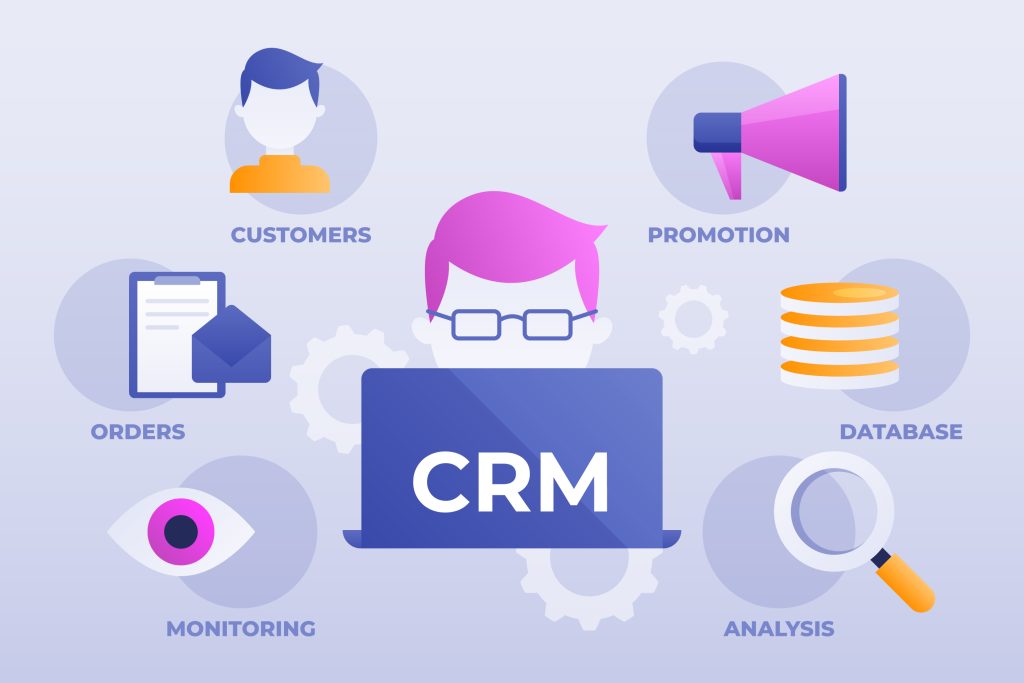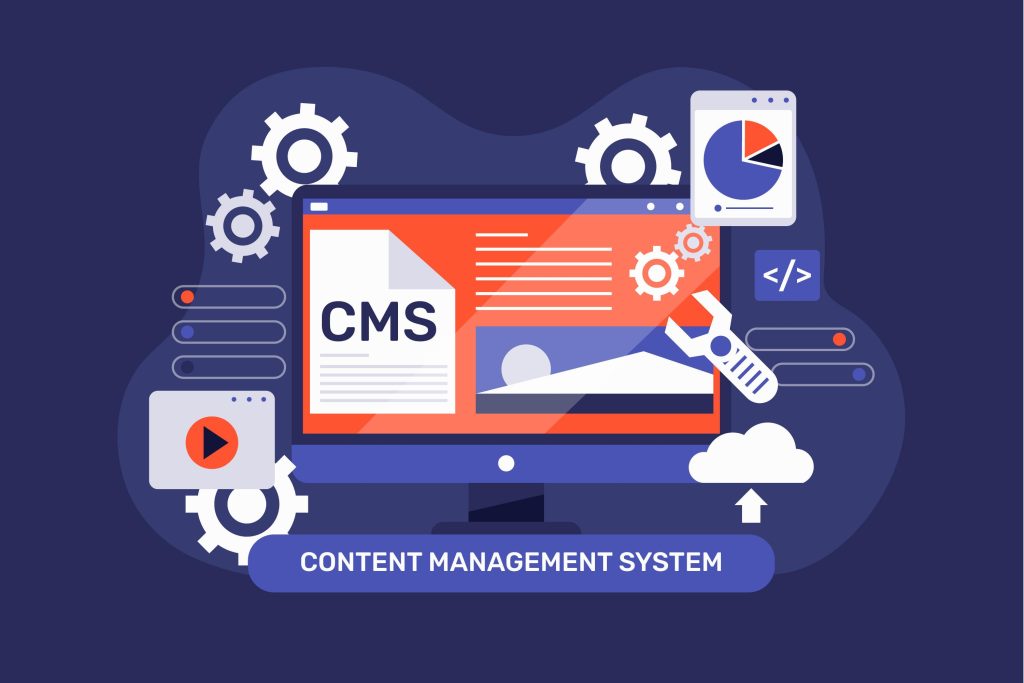CRM vs CMS: Understanding the Differences and How to Choose the Right System for Your Business

Introduction
Okay, folks, let’s dive into the exciting world of business software – I promise, it’s not as snooze-worthy as it sounds! So, we’re up against two big guns here: CRM and CMS. Customer Relationship Management (CRM) systems, like Salesforce and Pipedrive, keep businesses in check by managing customer interactions. On the flip side, Content Management Systems (CMS) such as WordPress and Joomla are the backbone of any site helping you handle content creation and updates with ease. Knowing the difference between these two can be a game-changer for your business operations. So, let’s get started on figuring out which system suits your needs best!
Understanding CRM

When it comes to choosing software to streamline your operations, two platforms often come up in the discussion: CRM and CMS. While both are critical in their own domains, they serve different purposes. Let’s dive into understanding CRM first.
Definition and Purpose of CRM
CRM, or Customer Relationship Management, is a system designed to manage a company’s interactions with current and potential customers. At its core, CRM is all about building and maintaining strong customer relationships. It helps businesses stay connected to customers, streamline processes, and improve profitability.
The purpose of a CRM system extends beyond just a digital Rolodex of contact information. It’s about ensuring that businesses have a better understanding of their customers’ needs and behaviors, leading to better customer satisfaction and eventually higher sales. Basically, a CRM system acts as your go-to tool for managing business interactions, tracking sales, and automating communications.
Key Features of CRM Systems
A solid CRM system brings a lot to the table, offering features that target various aspects of customer relationship management. Here are some of the key features:
– Contact Management: Centralizes customer information, making it easily accessible to all team members.
– Sales Management: Tracks the entire sales process from leads to closure, helping sales teams stay organized and on top of their pipelines.
– Interaction Tracking: Records customer interactions over phone, email, and chat, ensuring that everyone is on the same page.
– Task Automation: Automates routine tasks such as sending follow-up emails, scheduling calls, and updating customer records.
– Reporting and Analytics: Provides insights into sales performance, customer behaviors, and marketing effectiveness through detailed reports and dashboards.
– Customer Support: Integrates with help desk tools to provide excellent after-sales service and support.
– Integration and Scalability: Works well with other software like email marketing tools, accounting systems, and e-commerce platforms, and can grow with your business.
Popular CRM Platforms: Salesforce, Pipedrive, Zoho
When talking about CRM software, there’s no denying the appeal of platforms like Salesforce, Pipedrive, and Zoho. Let’s explore what makes each of them tick:
– Salesforce: It’s often considered the crème de la crème of CRM systems. Known for its versatility and robust feature set, Salesforce excels in customization and scalability. It boasts powerful analytics, integration capabilities, and AI-driven automation, making it suitable for businesses of all sizes. However, its extensive features can be overwhelming for small businesses and the cost can add up quickly.
– Pipedrive: Tailored mainly for small to mid-sized businesses, Pipedrive is celebrated for its user-friendly interface and pipeline management features. It breaks down the sales process visually, enabling teams to track leads and deals effortlessly. Its streamlined interface and ease of use make it an excellent choice for users who prioritize simplicity and effectiveness over expansive features.
– Zoho CRM: Offering a comprehensive suite of applications, Zoho CRM stands out for its affordability and flexibility. It provides a wide range of tools covering everything from sales automation and customer support to inventory management. Zoho is especially appealing to smaller businesses looking for a cost-effective, all-in-one solution. Its integration with the larger Zoho ecosystem is a huge plus, offering everything from emails to finance tracking.
Understanding CMS

Now that we’ve unraveled the mysteries of CRM, let’s shift our focus to another essential tool in your business arsenal: the Content Management System, or CMS. A CMS is instrumental in managing and delivering digital content, providing a backbone for your website.
Definition and Purpose of CMS
A CMS, or Content Management System, is software used to create, manage, and modify content on a website without the need for specialized technical knowledge. Essentially, it manages your website’s content, making it easier to update blogs, articles, media, and other content formats.
The purpose of a CMS is primarily to simplify the web development and content management processes. It allows multiple users with various permission levels to manage content, data, and information of a website project or intranet application. They make it easier to maintain a vibrant and up-to-date web presence without constantly digging into code.
Key Features of CMS Systems
A CMS comes packed with features that facilitate content management and website maintenance. Here are some key features that define a good CMS:
– User-Friendly Interface: Offers an intuitive design that helps users easily add, edit, and manage content.
– Content Organization: Structures content with categories and tags, making it easier to locate and manage.
– Themes and Customization: Provides pre-designed themes and allows for customization to tailor the look and feel of your website.
– SEO Tools: Incorporates features that optimize content for search engines, including meta tags and keyword suggestions.
– Plugins and Extensions: Offers a plethora of plugins or extensions to enhance functionality, from social media integration to advanced analytics.
– User Management: Manages different user roles and permissions, ensuring that the right people have the correct level of access.
– Security Features: Includes layers of security measures like SSL certificates, firewalls, and regular updates, safeguarding your website from threats and vulnerabilities.
Popular CMS Platforms: WordPress, Drupal, Joomla
When it comes to CMS platforms, WordPress, Drupal, and Joomla lead the charge. Each offers unique features catering to different user needs:
– WordPress: As the undisputed champion of CMS platforms, WordPress powers about 40% of websites. It’s known for its easy setup, vast library of themes, and plugins. Its user-friendly interface and strong community support make it ideal for beginners. WordPress is extremely flexible and can be molded into anything from a simple blog to a full-fledged e-commerce site.
– Drupal: Known for its robustness and flexibility, Drupal is a powerful and customizable CMS suitable for complex and high-traffic websites. It requires a steeper learning curve compared to WordPress but shines with its powerful performance, robust security features, and ability to handle large volumes of content seamlessly. It’s favored by large corporations and government websites due to its high level of scalability and security.
– Joomla: As a middle ground between WordPress and Drupal, Joomla offers robust content management capabilities with more built-in features than WordPress. It provides greater flexibility for displaying different types of content than WordPress, without the extensive customization required by Drupal. It’s user-friendly for those with some experience, providing a balance between ease of use and powerful functionality.
By now, you should have a decent grasp of what CRM and CMS systems are all about. Each has its own unique advantages tailored to specific business needs, and understanding these differences is crucial in choosing the right platform for your business. Whether you’re aiming to nurture customer relationships or manage content more effectively, the right system can be a game-changer in streamlining your operations.
CRM vs CMS: Key Differences
When deciding between a Customer Relationship Management (CRM) system and a Content Management System (CMS), it’s crucial to understand their key differences. These two types of software can significantly impact how your business operates, but they’re built for distinctly different purposes and can affect your workflows in unique ways.
Functional Differences
At the heart of it, a CRM system focuses on managing customer relationships. It’s all about understanding your customers and optimizing how you interact with them. Think of CRMs like Salesforce, Pipedrive, Capsule, Zoho, and Creatio. They are designed primarily for sales teams, customer service reps, and managers who need to keep tabs on everything from customer interactions to sales pipelines and service issues.
On the other hand, a CMS is the go-to platform for managing and delivering content on your website. Whether you’re a blogger, a marketer, or running an eCommerce business, a CMS helps you create, edit, and publish content efficiently. Platforms such as WordPress, Joomla, and Drupal are perfect examples. They’re focused on content, ranging from text and images to video and audio, helping you manage the digital content your audience sees.
In short:
– CRM: Helps track customer activities and nurtures relationships.
– CMS: Handles the development and maintenance of digital content.
Target Users and Industries
The target users and industries for CRMs and CMSs couldn’t be more different. CRMs are typically essential for sales and customer service-driven industries. If you’re in retail, finance, or any business where customer interaction is king, a CRM is your bread and butter. For example, sales teams use CRMs to manage leads and deal flow, while customer support teams might track interactions to effectively respond to client needs.
On the flip side, a CMS is utilized by industries focusing on digital content and online presence. Publishing companies, media organizations, and online retailers rely heavily on a CMS to keep their content fresh and relevant. Marketers are the primary users here, aiming to manage content marketing campaigns effectively, track website analytics, and optimize SEO efforts.
Here’s a quick compare:
– CRM Industries: Sales, Customer Service, Financial Services
– CMS Industries: Publishing, Media, eCommerce
Integration and Customization Capabilities
Integration and customization capabilities are where both CRM and CMS platforms can offer significant benefits to businesses, but their functions diverge based on your needs.
CRMs, like Salesforce and Zoho, often come with strong integration options with email systems, marketing automation platforms, and accounting software. These integrations help businesses streamline processes like lead management, email campaigns, and financial reporting. Many CRMs also offer customizable dashboards and workflows, allowing businesses to tailor them to their sales processes.
CMS platforms, meanwhile, provide various plugins and extensions that enhance website functionality. Whether it’s adding an eCommerce feature, integrating social media, or optimizing SEO, a CMS allows you to customize your site based on your needs. Plus, these platforms usually support various themes, giving you flexibility in design and layout to reflect your brand’s identity.
In essence:
– CRMs: Integrate with sales and marketing tools, customizable for sales workflows.
– CMSs: Extendable via plugins and themes, customizable for content and design.
Choosing the Right System for Your Business

Choosing between a CRM and a CMS comes down to understanding your business’s unique needs. Not all software fits every business like a glove, and a little clarity on what you need can go a long way in steering you towards the right solution.
Assessing Business Needs
First off, take a long, hard look at what your business truly needs. Start by asking these questions:
– Are customer relationships and sales your main focus?
– Do you rely heavily on content and digital marketing strategies?
If building and maintaining customer relationships is at the top of your priority list, a CRM is likely going to be your best friend. These systems excel at optimizing the sales journey and ensuring no customer interaction falls through the cracks.
On the other hand, if your primary goal is to produce, manage, and deliver content online, a CMS would be more up your alley. This software ensures you have robust tools to publish content efficiently while keeping your website running smoothly.
Consider making a checklist of needs like:
– Key functions you desire (e.g., lead tracking, content publishing)
– Areas in your workflow needing support
– Must-have integrations with existing systems
Evaluating Budget and Resources
Budget and resources play a pivotal role in the decision-making process. CRM systems often involve subscription costs, with prices varying based on features and the number of users. While some platforms, like Zoho, may seem affordable, premium features or additional users can increase overall costs significantly. So, make sure to account for these extras when planning your budget.
CMS platforms might not always require a hefty upfront fee, but costs can sneak up on you. Consider expenses like premium themes, plugins, or even hiring developers for customizations. Plus, if your business needs a complex site or high traffic handling, expect to invest in robust hosting services, which can jack up costs too.
Here are some budget considerations:
– CRMs: Subscription fees, pricing tiers, cost per user
– CMSs: Hosting services, premium features, and third-party plugins
Importance of Scalability and Future Growth
Thinking about your business’s future is key when choosing between a CRM and a CMS. A system that suits your needs today may not suffice as your business grows.
With CRMs, scalability can mean adding more features or users as your company expands. It’s vital to choose a CRM that can handle this growth without requiring a disruptive switch to a new system. Look for one with flexible pricing models and robust support for scaling. This will save you a lot of headaches when your team doubles, or you start targeting new markets.
For CMS platforms, scalability often involves handling more traffic, supporting a broader range of content, or integrating with more advanced marketing tools. You want a CMS that allows for the simple addition of functionalities as your needs evolve. It should empower your site to run smoothly even as it grows larger and expects more visitors.
When thinking scalability:
– CRMs: Should support growth in users and functionalities
– CMSs: Need to handle increased traffic and richer content offerings
By taking a strategic view, examining your needs, available resources, and potential for growth, you’ll be better equipped to choose the solution that aligns with your business goals. Whether you lean towards nurturing customer relationships with a CRM or creating stellar content with a CMS, choosing the right system is an investment toward smoother operations and a more successful business future.
Conclusion
When deciding between a CRM and a CMS, it’s crucial to consider the unique needs of your business. If your primary focus is on enhancing customer relationships, managing sales pipelines, and boosting your customer service game, then a CRM like Salesforce, Pipedrive, or Zoho might be your best bet. On the other hand, if you’re striving to streamline and manage content to improve digital marketing efforts, a CMS would be more appropriate.
It’s not always an either-or situation. Many successful businesses use both systems to complement each other. The collaboration of CRM and CMS can offer a comprehensive system for managing customer interactions and content effectively.
In summary, take the time to evaluate your business goals and workflow to choose the system that offers the best benefits for your operation. Stay flexible, and don’t hesitate to utilize both systems if it means achieving greater heights in customer satisfaction and content excellence.
You might also be interested How CRM Software Transforms Accounting Firms for Better Client Management



